The Best Crochet Projects to Make with Thin Yarn
Do you feel drawn to the delicate beauty of thin yarn? This post will help you decide what to crochet with thin yarn.
In the world of yarn, thickness is often categorized by weight, ranging from super fine yarn to super bulky yarn.
It’s no secret: I love working with thin yarn. Yarn weight plays a crucial role in designing. I rarely work with bulky weight yarn and am very picky about worsted weight yarn.
Crocheting with lightweight yarn opens up a world of possibilities, enabling you to create intricate designs and lightweight, airy garments. To compromise, my preferred yarn weight to work with is Light weight (3) because it allows for quicker work-up than really thin yarn while still offering creative freedom with stitches – everyone knows how much I love more detailed stitch patterns.
What is considered thin yarn?
Thinner yarns typically falls into the category of lace weight, fingering weight, or sport weight, although there can be some overlap between these categories. Here’s a breakdown of what is generally considered thin yarn according to the Craft Yarn Council:
1. Lace Weight Yarn (0):
Lace weight yarn is the thinnest category of yarn, often referred to as fingering 10-count crochet thread. It is incredibly fine and produces delicate, lightweight fabric when crocheted. Lace weight yarn is typically used for intricate lacework, delicate shawls, and fine heirloom-quality projects.
2. Super Fine (1):
Fingering weight yarn is slightly thicker than lace weight but still considered thin compared to other yarn weights. Also known as sock yarn or baby yarn, and fingering yarn. This weight is versatile and commonly used for socks, shawls, lightweight garments, and accessories.
3. Fine (2):
Sport weight yarn is commonly referred to as sport yarn or baby yarn and creates a slightly denser fabric compared to lace and super fine yarn. It is often used for lightweight garments, baby clothes, and accessories.
Benefits of working with lightweight yarn
Many makers avoid projects made with thin yarn because the finer gauge and smaller stitches may take longer to complete. However, I beg to differ and believe the finished objects are 100% worth the effort.
Crocheting with thin yarn offers a myriad of benefits that appeal to both beginners and experienced crafters alike. Here are some of the advantages of using thin yarn for crochet projects:
- Intricate Detailing – Thin yarn enables the creation of intricate stitches and delicate designs, which may be challenging to achieve with thicker yarns. This makes it perfect for projects desiring fine details, such as lacework, intricate patterns, or small amigurumi toys.
- Lightweight Finished Products – Crocheting with thin yarn results in lightweight finished products that are comfortable to wear and handle. This makes thin yarn ideal for crafting garments, accessories, and home decor items with a delicate, airy feel.
- Versatility – Thin yarn is suitable for a wide range of projects, from delicate lace shawls and baby clothes to lightweight scarves, hats, and home decor items. Its versatility allows crafters to explore different patterns and designs, employing various crochet techniques and styles.
- Enhanced Drape – Thin yarn often possesses a finer texture and smoother finish compared to thicker yarns, resulting in projects with enhanced drape. This quality makes thin yarn perfect for creating flowing garments, elegant shawls, and decorative accessories with a soft, luxurious feel.
- Portability – Projects made with thin yarn are typically more compact and portable than those made with thicker yarns, making them convenient for crocheting on the go. Whether commuting, traveling, or enjoying the outdoors, thin yarn projects are easy to pack and take along.
- Skill Development – Crocheting with thin yarn can enhance crocheting skills by requiring precision and attention to detail. Working with fine yarn challenges crafters to master intricate stitches and techniques, fostering growth and expansion of crochet abilities.
Crochet hooks and fiber content for thin yarn
It’s important to note that crocheting with thin yarn requires the use of smaller crochet hook sizes, typically made of steel to withstand their much smaller diameter. A common brand for smaller hooks is Boye. However, crocheting with smaller hooks for extended periods can lead to cramping. For increased comfort, crafters may opt for custom-made ergonomic hook handles.
The fiber content of the yarn is also significant. Animal fibers are popular for thinner yarns, particularly for making detailed sweater designs and colorwork. Examples include thin alpaca yarn and superwash merino wool, which often come in beautiful, albeit pricey, skeins. Fortunately, since smaller stitches are employed, a hank of yarn can go a long way when working with such exquisite materials. When using animal fibers, it’s crucial to closely follow the care instructions on the yarn labels.
Personally, I prefer plant-based yarn fibers like cotton thread and bamboo. Working with thin plant fibers like cotton yarn is economically sustainable and usually more affordable. It also allows for greater attention to detail and focus on stitch definition. Additionally, cotton yarn is easier to care for and designed to withstand a lot of wear and tear.
Different fibers should be chosen according to their intended purpose and function. For instance, scratchy materials wouldn’t be suitable for baby garments, and using expensive yarn for items like wall hangings or cup cozies might not be practical; in such cases, acrylic yarn works just fine.
Best things to Crochet with Thin Yarn
So, what exactly can you crochet with thin yarn? Well, technically, you can crochet just about anything. However, being intentional about the yarn weight and purpose should guide your project choices. Here’s a rundown of the best projects to make with thin yarn:
1. Lace Shawls
Fine weight yarn is perfect for creating delicate lace patterns like shawls and scarves. Crocheting a lace shawl allows you to showcase the intricate beauty of thin yarn while creating a versatile accessory that can be worn year-round. A triangle scarf is a popular and quick project to make with thinner yarn that looks elegant and looks good on any outfit.
Annie Design Crochet has a whole collection of lacy shawl designs using just one skein! Choose a delicate lace pattern and let your creativity flow as you work with fine yarn to create a stunning masterpiece.
Lion Brand Yarn has a line of yarn called Shawl in a Ball. This yarn has a delicate beautiful feel to it and works up in an ombre effect. Here is a simple scarf I made using this yarn, absolutely gorgeous (no pattern).

2. Baby Clothes
There’s something truly special about crafting handmade garments for little ones, and thin yarn is ideal for creating soft, lightweight baby clothes. From tiny cardigans to adorable hats and booties, the options are endless when it comes to crocheting for babies. Opt for soft, machine-washable yarn for style and practicality.
I used to carry handmade baby clothes in my store back in the day before I became a crochet designer. My Paulo and Sylvia Rompers were never turned into patterns and were made using DK weight yarn (Lion Brand Yarn Feels Like Butta) but look how cute crocheted baby clothes are! Like, who can resist.

3. Amigurumi
Amigurumi, the art of crocheting small stuffed toys and characters, is another fantastic way to put thin yarn to use and work through your yarn stash. Create charming creatures, cute animals, or whimsical characters using fine yarn to achieve a dainty, detailed finish. You can read more about the best yarn for amigurumi here.
Fun fact, my very very first amigurumi project was a little bear made using fine crochet thread. I wish I still had a picture of it!
4. Lightweight Accessories
Thin yarn is excellent for crocheting a variety of lightweight accessories that add a touch of style to any outfit. From delicate scarves and wraps to intricate fingerless gloves and headbands, there’s no shortage of accessories you can create with fine yarn. Lightweight accessories are a great way to experiment with different stitches for a delicate and timeless and make a perfect gift for those who like the cottage core or victorian aesthetic.
5. Home Decor
Many heirloom pieces and home decor such as crochet doilies are made using thin yarn. Other examples of crochet home decor using thin yarn are intricate mandalas for wall hangings and flowers. Thin yarn allows you to add a touch of handmade charm to your home, whether you prefer classic elegance or bohemian flair.
6. Fine Garments
For those with a flair for fashion, crocheting with thin yarn opens up a world of possibilities for creating stylish garments with a lightweight, luxurious feel. Think delicate tops, airy cardigans, and flowing skirts that drape beautifully and showcase the beauty of fine yarn. Using thinner yarn instantly elevates crocheted garments making them lightweight and detail oriented.
Here are some simple garments I made using thing yarn (no patterns). The left one is a knitted mohair off shoulder sweater and the second is a crocheted top down sweater.
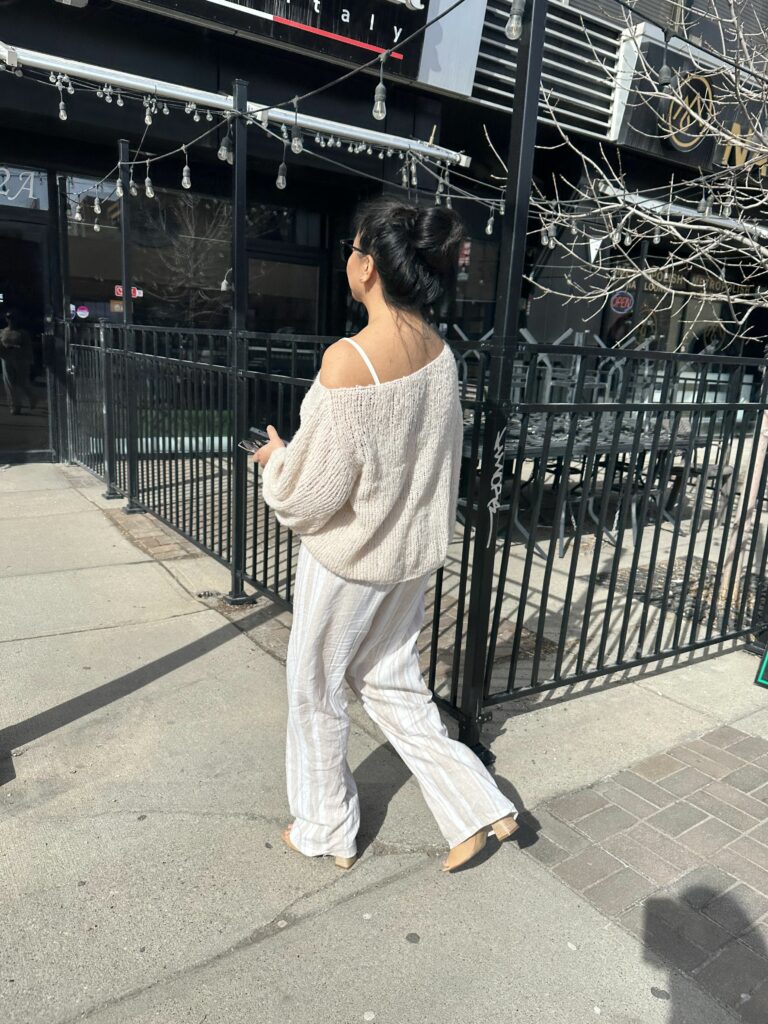
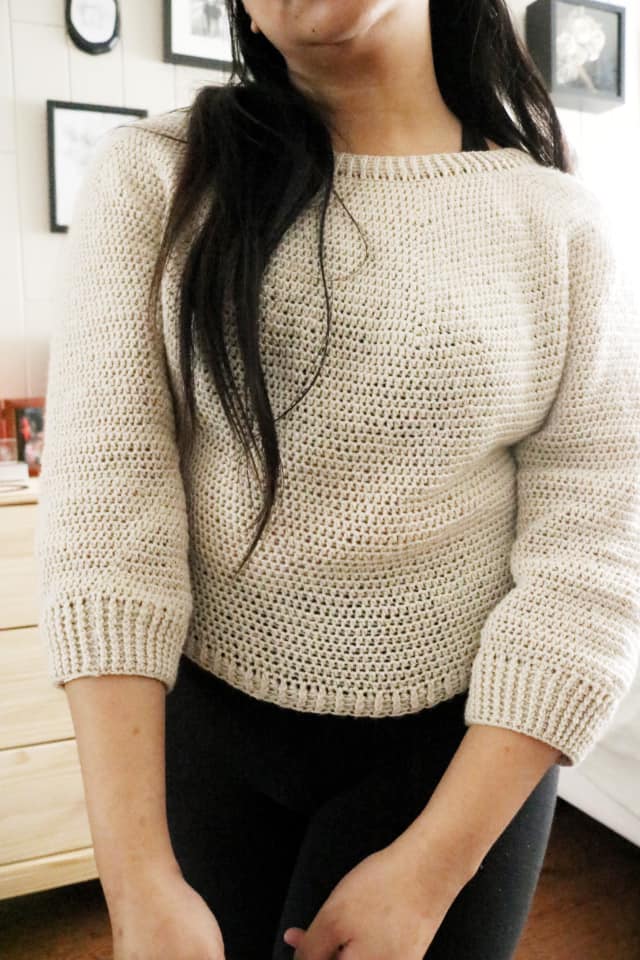
I hope you are inspired to crochet with thin yarn!
Crocheting with thin yarn offers endless opportunities for creativity and exploration. Whether you’re crocheting delicate lace shawls, cuddly amigurumi toys, or stylish garments and accessories, there’s something magical about working with fine yarn.
Want to try out some patterns? Make sure to check out all of my beginner friendly patterns here where you can find garments, amigurumi, and accessories.
Want to see summer crochet tops?
That’s all for now my maker friend! Remember, never miss a stitch by subscribing to my newsletter. See you next time!
xoxo
Abigail

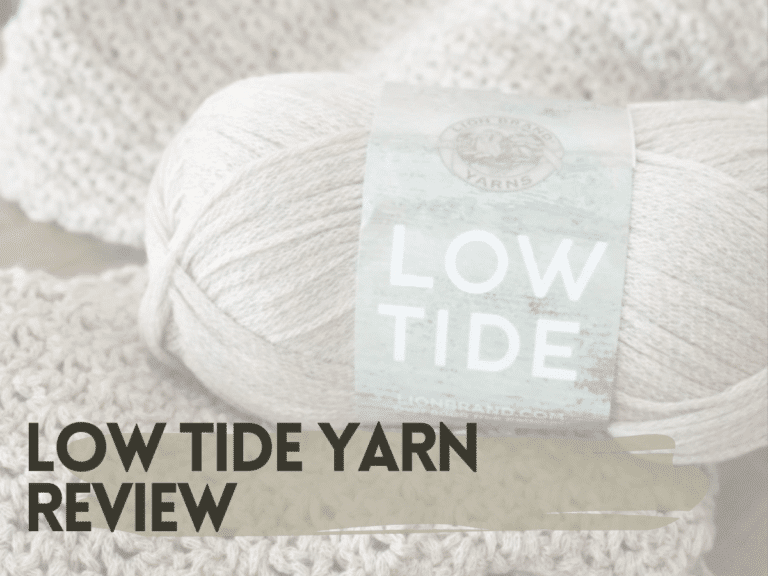
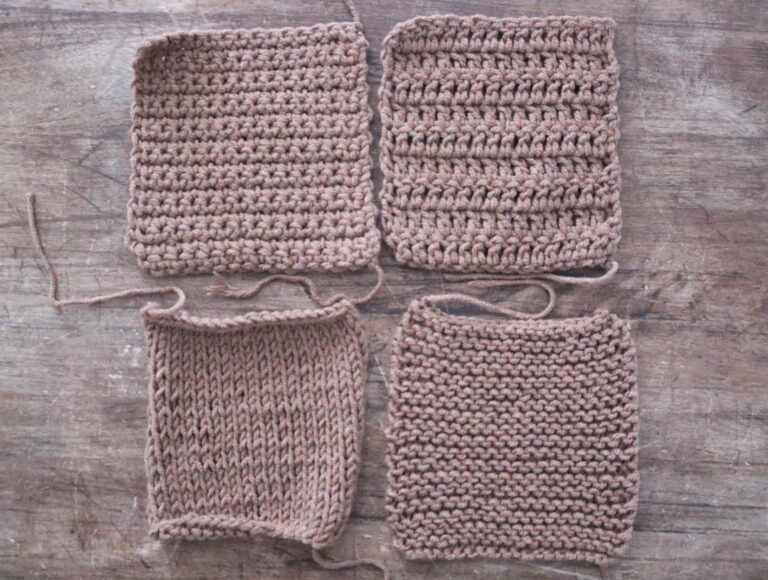
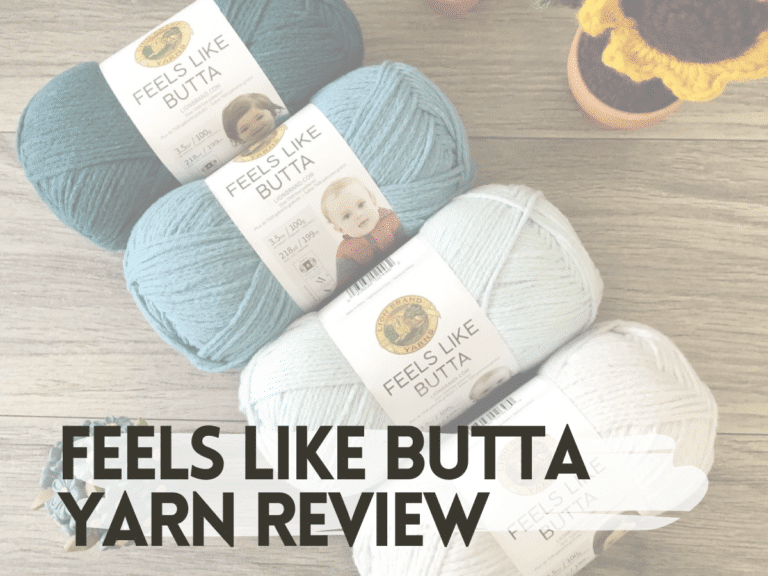
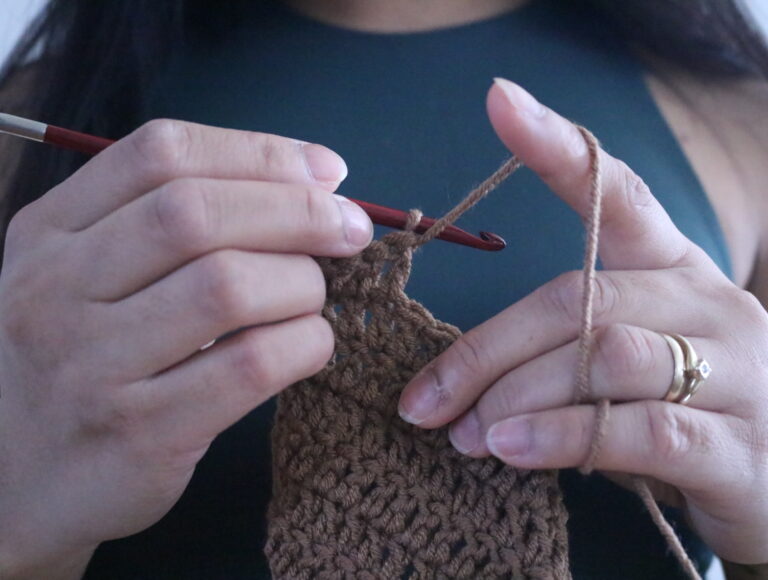
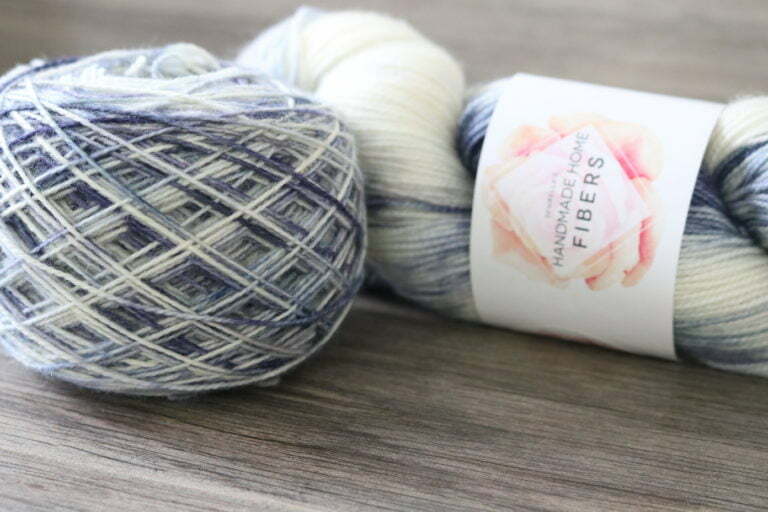
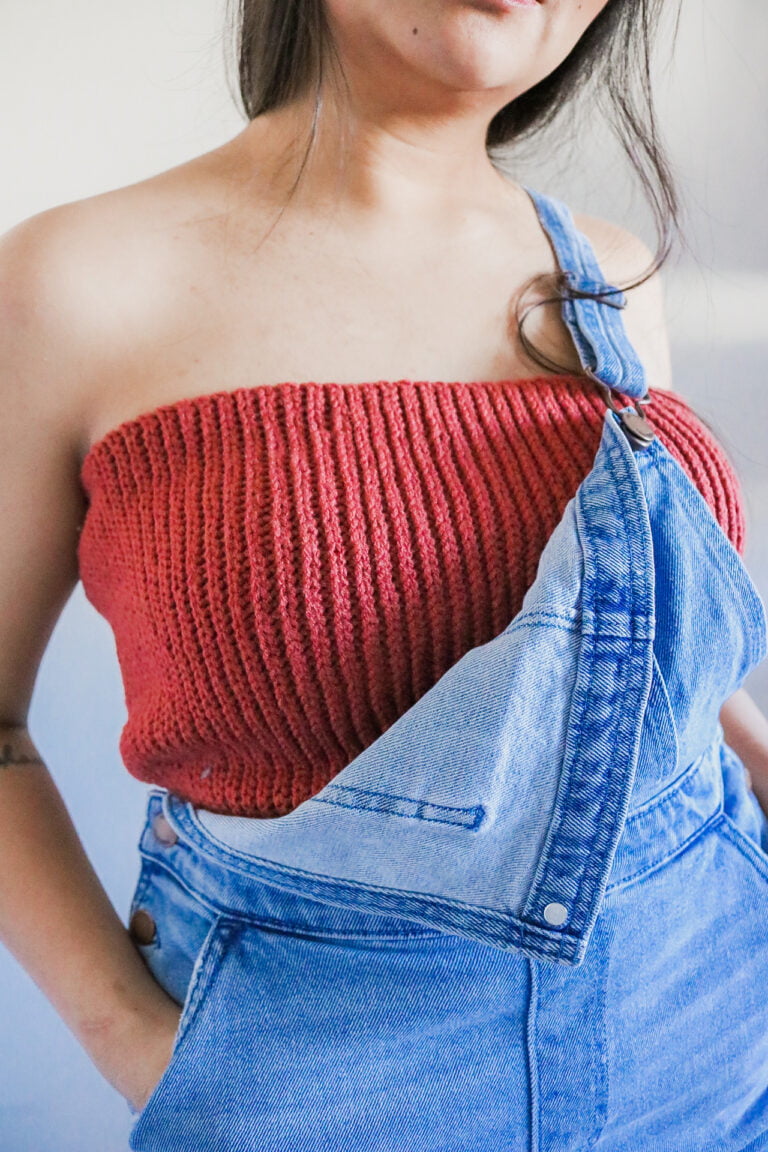
One Comment
Comments are closed.